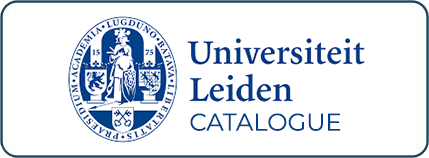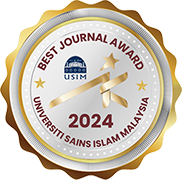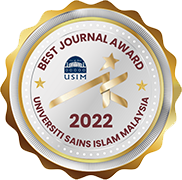THE CONCEPTUAL NEXUS BETWEEN ISLAMIC FORESIGHT, ISLAMIC THOUGHT AND THE SHARIAH
DOI:
https://doi.org/10.33102/mjsl.vol12no1.524Keywords:
Futures studies, Islam, Islamic foresight, progress, social transformationAbstract
The current global Muslim community is facing new challenges amidst the remnants of historical colonisation, sectarianism, and current geopolitical, economic and social realities. Despite these challenges, Muslim communities in general have been consistent in preserving the religious precepts derived from the primary sources of Al-Quran and Al-Sunnah, which form the foundation of the Islamic identity. Although widely underemphasised, futures thinking is deeply ingrained in the precepts of Islamic thought since the time of Prophet Muhammad (pbuh), which unbeknownst to many, has indubitably shaped the transformation not only in Muslim communities, but has also influenced global shifts in civilisation from multifarious aspects, for example, science and technology, arts, governance and social justice. This paper seeks to illustrate the significance of Islamic futures thinking as a foundation for progress in Muslim communities, by applying the qualitative methods of content analysis and engagements in focus group discussions. To this end, the study analyses data obtained from the exploration of Islamic texts, traditions and literatures on the Islamic perspectives of futures thinking. This paper advances the proposition that futures thinking has a profound basis in Islam due to the universal nature of the Islamic concepts of knowledge, the methods of addressing gradual and imminent change, its constant inspirations towards excellence and a justly balanced society, as well as Islamic ethics in foresight. Findings of this study highlight the importance of futures thinking as a capacity that must be developed in the Muslim world as part of the process towards long term social transformation.Downloads
References
Abdul-Rauf, M. (1991). The Muslim mind. Dewan Bahasa dan Pustaka.
AbuSulayman, A. (2004). Crisis in the Muslim mind. International Institute of Islamic Thought (IIIT).
Ahmed, I. (2002). Looking backwards into the future: A critique of Islamic modernism. Journal of Futures Studies, 7(2), 75-96.
Al-Attas, S.-N. (1996). Aims and objectives of Islamic education. Kazi Publications.
Al-Dani, A. (n.d.). Al-Sunan al-waridah fi al-fitan wa ghawailuha wa al-aaah wa ashratuha. Dar Al-'Asimah.
Al-Ghazali, A. H. (2018). The jewels of the Qur’an: Al-Ghazali's theory: A translation, with an introduction and annotation, of al-Ghazali's Kitab Jawahir al-Qur'an. (M. A. Al-Qasim, Trans.) Islamic Book Trust.
Al-Jilani, A. A.-Q. (2007). Revelations of the unseen (futuh al-ghaib) (3rd ed.). (M. Holland, Trans.). Al-Baz Publishing.
Al-Nawawi, Yahya bin Sharafuddin. (1998). Riyadh al Salihin. Muassasah Al- Risalah.
Al-Qaradawi, Y. (1996). Al-’aql wa-al-'ilm fi al-Qur'an al-Karim. Maktabah Wahbah.
Al-Qaradawi, Y. (2013). Fiqh al-Maalat. Retrieved April 10, 2022 from European Council for Fatwa and Research (ECFR): http://e-cfr.org
Al-Qaradawi, Y. (2013). Introduction to the study of Islamic Law (al-madkhal li-dirasat Al-Shari’ah Al-Islamiyyah). IBFIM.
Al-Raysuni, A. (2013). Imam Al-Shatibi's theory of the higher objectives and intents of Islamic Law. (N. Roberts, Trans.). International Institute of Islamic Thought.
Alwazna, R. Y. (2016). Islamic law: Its sources, interpretation and the translation of it into laws written in English. International Journal for the Semiotics of Law - Revue Internationale de Sémiotique Juridique, 29(2), 251-260.
Asad, M. (1999). Islam at the crossroads. The Other Press.
As-Siba’ee, M. (2008). The Sunnah and its role in Islamic legislation. (F. I. M. Shabbir, Trans). International Islamic Publishing House (IIPH).
Belka, I. (2016). The Origins of Foresight from an Islamic Perspective. Istishraf for Future Studies, 1(1), 134-159.
Bennabi, M. (1994). The problem of ideas in the Muslim world. International Institute of Islamic Thought (IIIT).
Bromwich, J. E. (2015, November 19). “Muslims defend Islam from being hijacked by ISIS”: The New York Times. https://www.nytimes.com/2015/11/20/world/europe/muslims-defend-islam-from-being-hijacked-by-isis.html
Bsoul, L. (2016). The development of Islamic jurisprudence: Late thirteenth/nineteen century to the early present. IOSR Journal of Humanities and Social Science, 67-77.
Cooperman, L. L., O'Connell, E., & Stencel, S. (2011). “The future of the global Muslim Population”: Pew Research Centre, USA: https://www.academia.edu/download/67277034/FutureGlobalMuslimPopulation_WebPDF_Feb2011.pdf
Dale, S. F. (2015). The orange trees of Marrakesh. Harvard University Press.
Durayni, F. (1987). Khasais al-tashri` al-Islami fi al-siyasah wa-al-hukm. Muassasat al-Risalah.
el-Aswad, e.-S. (2019). Al-Ghaib (the invisible and unknowable). In D. A. Leeming, Encyclopedia of Psychology and Religion. Springer Nature.
Faris, M. A. (1989). Irtibat al-shur bi'l-fatwa wa qadaya'l-ijtihad al- jama'i. In Al-Shura fi al-Islam (Vol. III, pp. 989-1012). Amman.
Fuller, G. E. (2010). A world without Islam. Little, Brown and Company.
Haddad, Y. Y., & Esposito, J. L. (1997). Islam, gender and social change. Oxford Univeristy Press.
Ibn 'Asyur, M. T. (1984). Tafsir al-tahrir wa al-tanwir. Darul Jamahiriyyah li al-Nasyr wa al-Tazi’wa al-I’lan.
Ibn Hammad, N. (2003). Kitab al-Fitan. (S. Zakkar, Ed.). Dar al-Fikr.
Ibn Kathir, I., & Ibbiyah, M. (1968). Al-nidhyah fi al-fitan wa al-malahim. Dar Al-Fikr.
Ibn Khaldun, A.-a.-R., (1958). The Muqaddimah: An introduction to history (Vol. 3). (Rosenthal, F., & Dawood, N. J., Trans.). Princeton University Press.
Inayatullah, S. (1988). Sarkar’s spiritual dialectics: An unconventional view of the future. Futures, 20(1), 54-65.
Inayatullah, S. (2013). “Futures studies: Theories and methods”. Researchgate. https://www.researchgate.net/publication/281595208_Futures_Studies_Theories_and_Methods>
Inayatullah, S., & Boxwell, G. (2003). The problem of Future studies. In Z. Sardar, & S. Inayatullah, Islam, Postmodernism and Other Futures: A Ziauddin Sardar Reader (pp. 247-259). Pluto Press.
Iqbal, M. (2013). The reconstruction of religious thought in Islam. Stanford University Press.
Ishak, M. S. (2018). Considering maalat as an approach to applying maslahah in reality. Islam & Civilisational Renewal, 9(2), 147-160.
Kamal, H. M. (2011). The Human intellect, divine revelation and knowledge based on Al-Qaradhowi’s work. Revelation and Science, 1(12), 1-12.
Kamali, M. H. (2003). Principles of Islamic jurisprudence. Islamic Texts Society.
Komp-Leukkunen, K. (2020). What life-course research can contribute to Futures studies. Futures, 124, 102651.
Kutty, F. (2018, January 2). “Extremists have not only hijacked Islam and its symbols, but also American sensibility”: Middle East Eye. https://www.middleeasteye.net/opinion/extremists-have-not-only-hijacked-islam-and-its-symbols-also-american-sensibility
Masini, E. (1993). Why Futures studies? Grey Seal Books.
Muslim, Imam. (2008). Sahih Muslim / Imam Muslim (2 edn.). Dar Al Kutub Al Ilmiyah.
Muzykina, Y. V., & Aljanova, N. K. (2022). Modeling alternatives for Imams' role and Islam development in post-pandemic Kazakhstan. Journal of Futures Studies, 26(4), 79-97.
National Geographic Society. (2018). “Freshwater availability”. National Geographic Society. https://www.nationalgeographic.org/photo/waterstress-2008-unep/
Rachmadhani, F., Mochammad Sahid, M., & Mokhtar, A. W. (2022). Implementation of the change in Islamic law (taghayyur al-ahkam) during COVID-19 pandemic in the perspective of Majelis Tarjih Muhammadiyah in Indonesia. Malaysian Journal of Syariah and Law, 10(1), 108-116.
Rahman, A. (1981). Quranic sciences. Pustaka Nasional.
Rahman, F. (2020). Islam. University of Chicago Press.
Suyuti, Jalaladdin ‘A. Rahman. (1900). Al-jami’ al-saghir fi al-ahadith al-basyir al-nadzir. Al-Ma’arif.
Salahi, Adil. (2018). Al-Adab al-Mufrad with full commentary: A perfect code of manners and morality. Islamic Foundation Limited.
Schleifer, A. (2012). The Muslim 500: The world’s 500 most influential Muslims. The Royal Islamic Strategic Studies Centre.
Shinwari, F. M., & Tajik, M. I. (1986). Ibn Khaldun’s scientific method: A case study of Pakistan. JL & Soc'y, 5, 9.
Suleiman, H. (2022). Fiqh al-Maalat: An analysis of its origin, subsidiary and application. Malaysian Journal of Syariah and Law, 10(2), 26-37.
The World Bank. (2021). “Refugee population by country or territory of origin”: The World Bank: https://data.worldbank.org/indicator/SM.POP.REFG.OR?view=chart
Tirmidhī, Muḥammad ibn ʻĪsá, -892. (1970). Jami al-Tirmidhi. Maa sharḥihi tuḥfat al-aḥwadhi / li-Abd al-Raḥman al-Mubarakfuri. Dar al-Kitab al-Arabi.
Transparency International. (2020). “Corruption perception”: Transparency International: https://www.transparency.org/en/cpi/2020/index/nzl
Zahraa, M. (2000). Characteristic features of Islamic law: Perceptions and misconceptions. Arab LQ, 15, 168-196.
Downloads
Published
Issue
Section
Categories
License
Copyright (c) 2024 Norfadhilah Mohd Ali, Fadhlina Alias, Hendun Abd Rahman Shah, Muhammad Nizam Awang, Rana Abu-Mounes

This work is licensed under a Creative Commons Attribution-NonCommercial 4.0 International License.















































